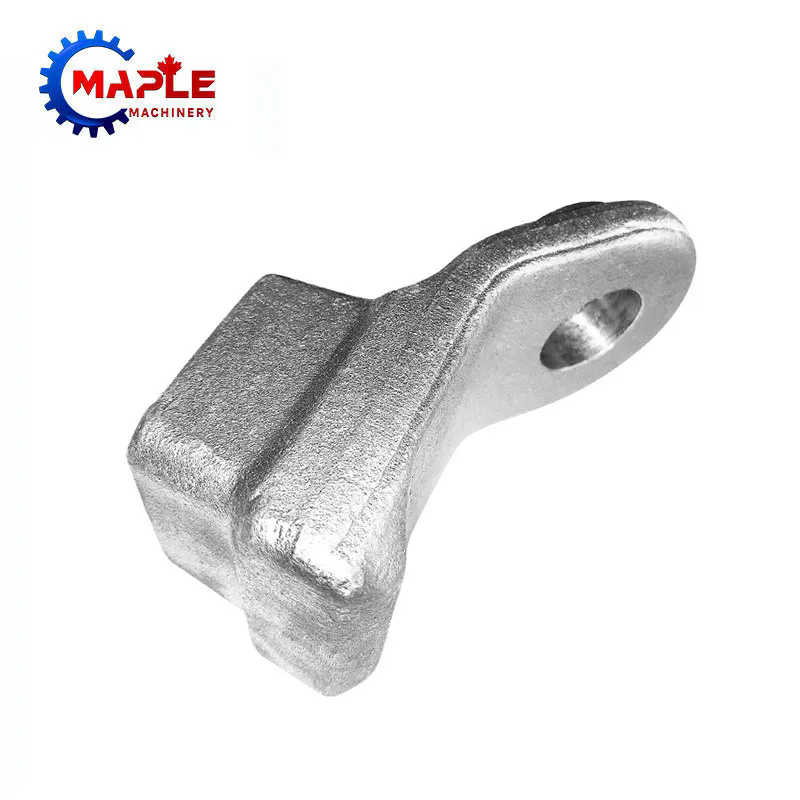The Essential Role of Valve Steel Forging Parts in Modern Industry
2024-10-12
In the realm of industrial manufacturing and engineering, the importance of high-quality components cannot be overstated. Among these, valve steel forging parts stand out as critical elements in various applications, ranging from oil and gas to water treatment and power generation. This blog will explore what valve steel forging parts are, their manufacturing process, key benefits, and their diverse applications across different industries.
What Are Valve Steel Forging Parts?
Valve steel forging parts are components created through the forging process, which involves shaping metal using compressive forces. In this case, high-quality steel is shaped into valve components that control the flow of fluids or gases within various systems. These parts are essential for the efficient operation of valves, which are critical in regulating pressure, flow, and temperature in a multitude of applications.
Types of Valve Steel Forging Parts
Valve steel forging parts can include a variety of components, such as:
- Valve Bodies: The main structure of the valve, housing other components and providing a pathway for fluid flow.
- Bonnet: The cover that encloses the valve body and contains the valve stem.
- Seats and Seals: Critical components that ensure a tight seal and prevent leakage.
- Stems: The part that connects the actuator to the valve disc, controlling its movement.
- Discs and Plug: The mechanisms that directly regulate flow through the valve.
The Manufacturing Process of Valve Steel Forging Parts
The manufacturing of valve steel forging parts involves several key steps:
1. Material Selection: High-quality steel is selected based on the specific requirements of the application, such as corrosion resistance, strength, and temperature tolerance.
2. Heating: The steel is heated to a temperature where it becomes malleable but not melted. This temperature varies depending on the type of steel used.
3. Forging: The heated steel is subjected to mechanical forces, typically through hammering or pressing, which shapes it into the desired form. This process can be done through various methods, including open-die forging and closed-die forging.
4. Cooling: After forging, the parts are cooled to room temperature. This step is crucial, as it helps determine the final mechanical properties of the steel.
5. Machining and Finishing: The forged parts are then machined to meet precise specifications, ensuring proper dimensions and surface finish. Additional treatments, such as heat treatment or coating, may be applied to enhance performance.
6. Quality Control: Rigorous testing and inspection are conducted to ensure the parts meet industry standards and customer specifications.
Key Benefits of Valve Steel Forging Parts
1. Strength and Durability: The forging process aligns the grain structure of the steel, resulting in components that are stronger and more durable compared to cast or machined parts.
2. High Resistance to Stress and Fatigue: Forged valve parts can withstand high pressures and temperatures, making them suitable for demanding applications in harsh environments.
3. Improved Leak Resistance: The precision of the forging process helps achieve tight tolerances, reducing the likelihood of leaks and ensuring efficient operation.
4. Versatility: Valve steel forging parts can be customized to meet specific application requirements, including different sizes, shapes, and material grades.
5. Cost-Effectiveness: While the initial investment in forging may be higher than other methods, the longevity and reliability of forged parts often result in lower maintenance costs and less downtime.
Applications of Valve Steel Forging Parts
Valve steel forging parts are used across a wide range of industries, including:
1. Oil and Gas: Critical for controlling the flow of oil and gas in pipelines, drilling operations, and refining processes.
2. Water Treatment: Used in valves for water distribution systems, wastewater treatment plants, and irrigation systems to manage flow and pressure.
3. Power Generation: Essential for controlling steam and gas flow in power plants, ensuring safe and efficient energy production.
4. Chemical Processing: Used in valves that manage corrosive chemicals, where strength and resistance to chemical degradation are paramount.
5. HVAC Systems: Important for controlling air and fluid flow in heating, ventilation, and air conditioning systems, contributing to energy efficiency and climate control.
Conclusion
Valve steel forging parts play a vital role in various industries, ensuring the safe and efficient operation of systems that rely on fluid and gas control. Their unique combination of strength, durability, and versatility makes them indispensable components in modern engineering applications.
As industries continue to evolve and demand higher performance from their equipment, the importance of high-quality forged valve parts will only increase. Investing in valve steel forging parts can lead to enhanced efficiency, reliability, and cost savings, positioning businesses for success in a competitive landscape.



